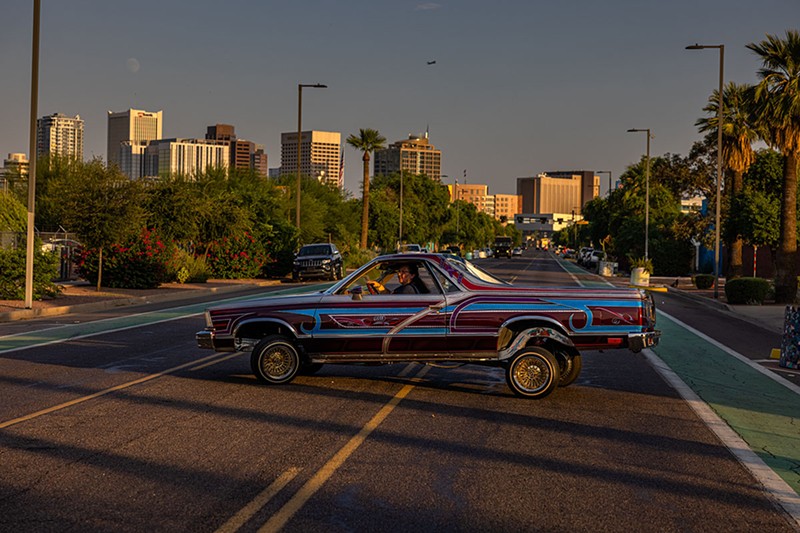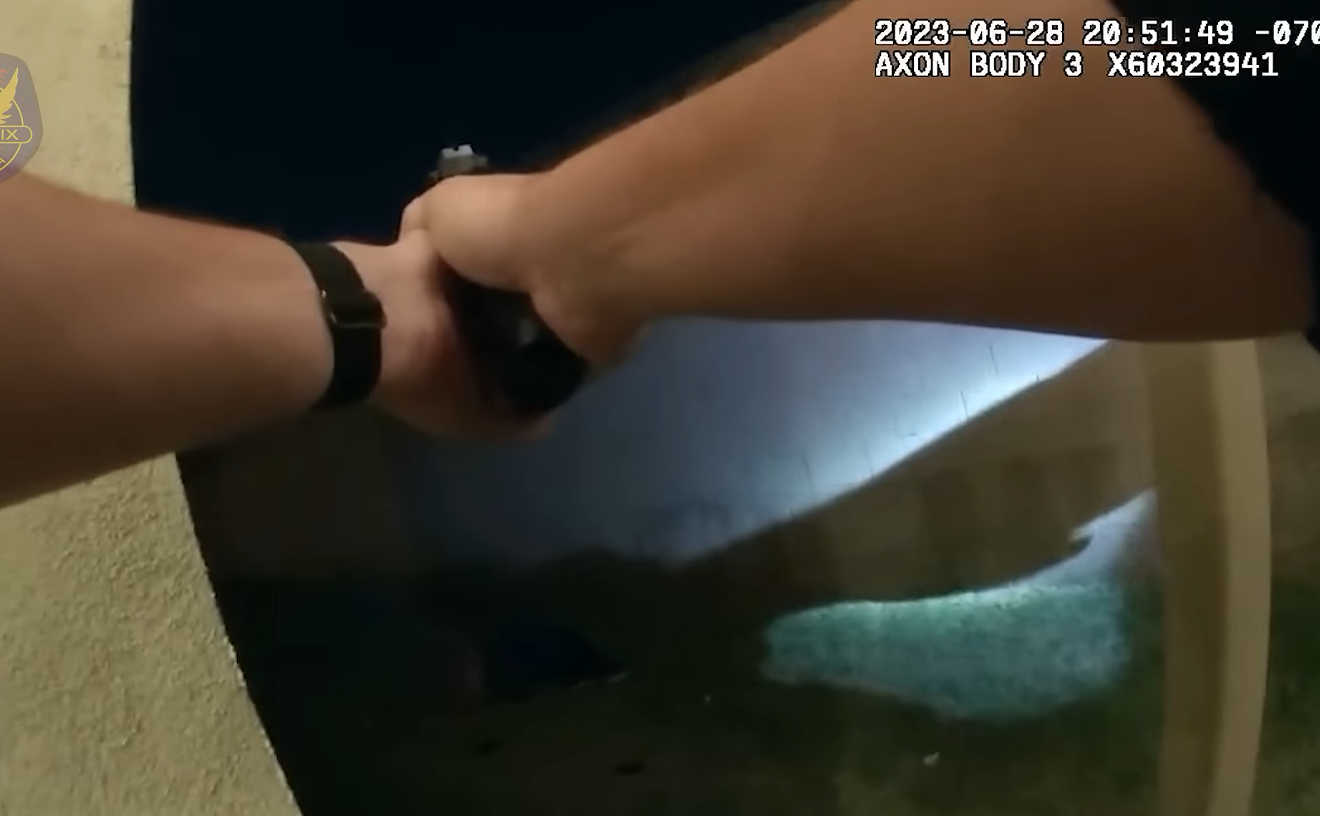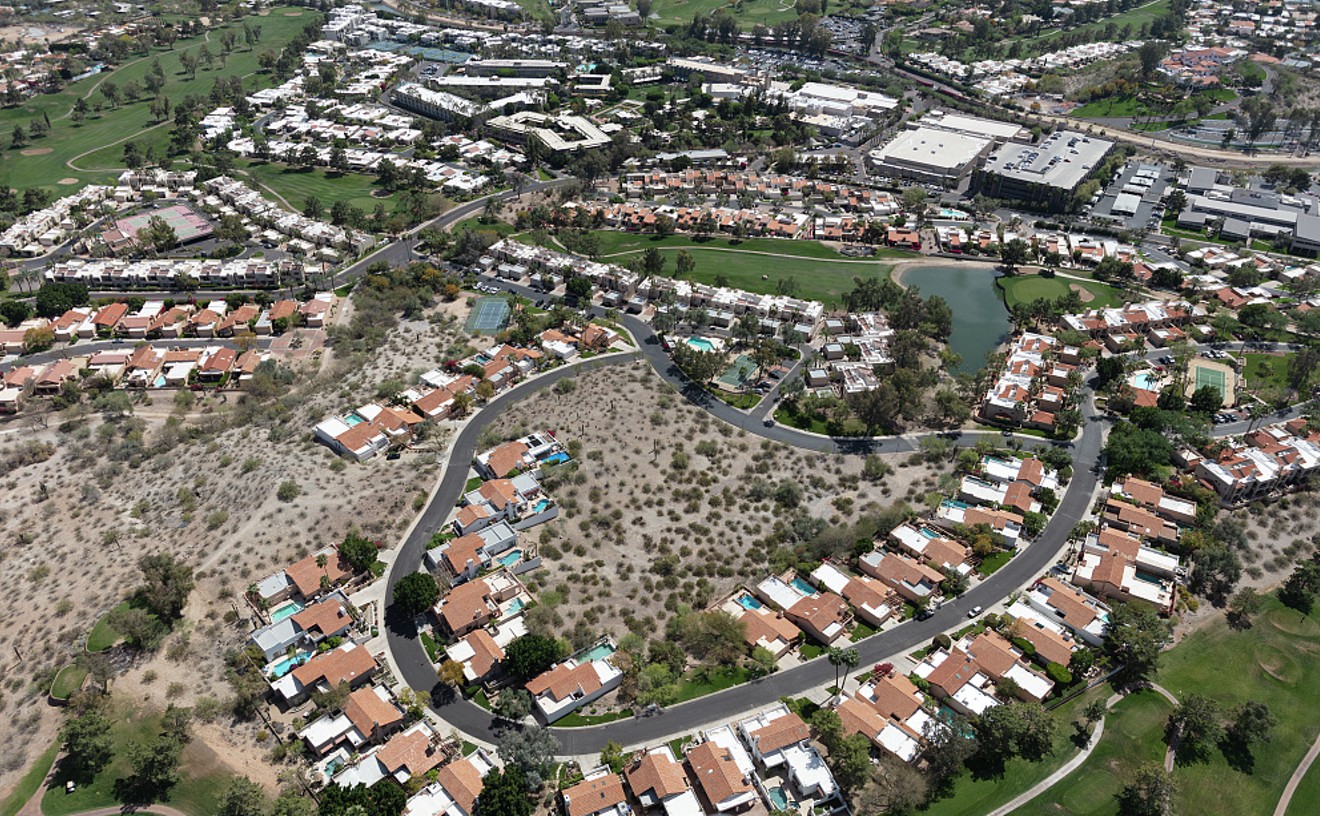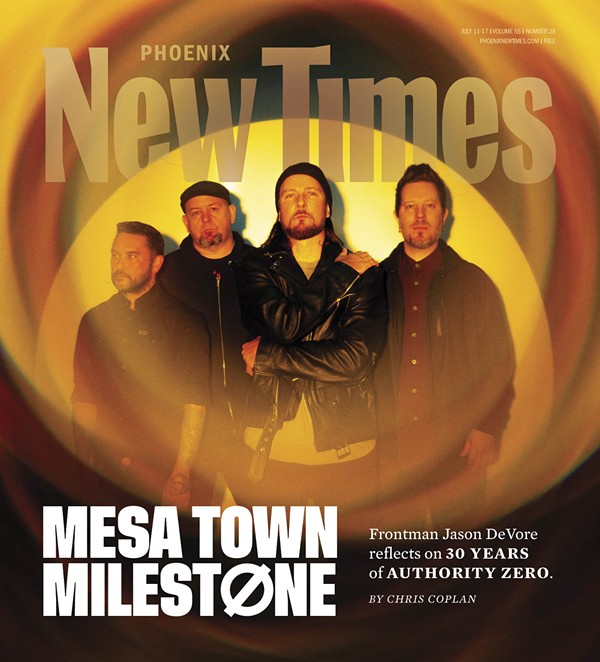Slow and Low: Cruising Around in Phoenix's Lowrider Scene
Lowrider culture used to be shady. Today, it's more about do-gooders. But it's always been about the cars.
October 11, 2021

Ash Ponders
[
{
"name": "Air - MediumRectangle - Inline Content - Mobile Display Size",
"component": "18478561",
"insertPoint": "2",
"requiredCountToDisplay": "2",
"watchElement": ".fdn-content-body",
"astAdList": [
{
"adType": "rectangle",
"displayTargets": "mobile"
}
]
},{
"name": "Editor Picks",
"component": "16759093",
"insertPoint": "4",
"requiredCountToDisplay": "1",
"watchElement": ".fdn-content-body",
"astAdList": [
{
"adType": "rectangle",
"displayTargets": "desktop|tablet"
},{
"adType": "rectangle",
"displayTargets": "desktop|tablet|mobile"
}
]
},{
"name": "Inline Links",
"component": "17980324",
"insertPoint": "8th",
"startingPoint": 8,
"requiredCountToDisplay": "7",
"maxInsertions": 25
},{
"name": "Air - MediumRectangle - Combo - Inline Content",
"component": "16759092",
"insertPoint": "8th",
"startingPoint": 8,
"requiredCountToDisplay": "7",
"maxInsertions": 25,
"watchElement": ".fdn-content-body",
"astAdList": [
{
"adType": "rectangle",
"displayTargets": "desktop|tablet"
},{
"adType": "rectangle",
"displayTargets": "desktop|tablet|mobile"
}
]
},{
"name": "Inline Links",
"component": "17980324",
"insertPoint": "8th",
"startingPoint": 12,
"requiredCountToDisplay": "11",
"maxInsertions": 24
},{
"name": "Air - Leaderboard Tower - Combo - Inline Content",
"component": "16759094",
"insertPoint": "8th",
"startingPoint": 12,
"requiredCountToDisplay": "11",
"maxInsertions": 24,
"watchElement": ".fdn-content-body",
"astAdList": [
{
"adType": "leaderboardInlineContent",
"displayTargets": "desktop|tablet"
},{
"adType": "tower",
"displayTargets": "mobile"
}
]
}
]
I am cruising Central in a candy-colored, chrome-covered 1965 Chevy Impala.
“This bitch sees me,” says Chuco, who’s driving the lowrider he calls his “baby.” I’m not sure what he means. Is he referring to the woman ogling us from the SUV in the next lane? Is he calling his lowrider a bitch? In the past half-hour, Chuco has used that word to describe the weather, a stop sign, and me.
“She’s acting like she’s never seen a sweet ride before,” Chuco explains, jabbing a thumb at the SUV driver. I have to place my head in my lap in order to gaze up and into the woman’s car. I smile and wave at her.
Chuco notices and rolls his eyes.
“Isn’t that the point, though?” I holler. It’s necessary to yell because Chuco is playing Dr. Dre at an ear-splitting volume. “Don’t lowriders want people to look at their cars?”
He doesn’t answer. Chuco is a man of few words and many tattoos. They crawl from his shoulders to his wrists and out from under the paisley do-rag he wears. Other than the spider web covering his left hand, which Chuco calls his “gang tat,” most of his ink is mermaids and octopuses and fish with human faces. Each of Chuco’s long fingers is adorned with a tattooed ring of what looks like squid tentacles.
“Do you come from a long line of mariners?” I shriek at Chuco as he turns very slowly onto East McKellips Road. It’s hard to talk to Chuco, and not just because of the impressively loud rap music playing. He doesn’t answer a lot of my questions, and his answers don’t always match what I’ve asked.
“This baby has a 350 in her now,” Chuco yells, patting the tiny chrome-plated-chain-link steering wheel resting on his knees. “Standing three-wheel, hundred-spoke rims, four-pump hydros, bitch.”
I have never felt so white in my entire life.
“Wow,” I reply. “And so much chrome, too!”
Chuco snorts. I’ve given up trying to be cool. Behind the wheel of his tricked-out ride, my new friend is a supernova of coolness and I’m a stuffy old gringo, riding shotgun in his jinete bajo and trying to get him to tell me about lowrider culture.
“So, what’s the history of lowriders?” I shout.
Chuco lifts his black-as-night Ray-Bans and looks me square in the eye for the first time since we met an hour ago.
“Bitch, why do you care about this shit?” he asks.
If I care about lowrider culture, it’s because I feel compelled to. I grew up cholo-adjacent, mere yards from Glendale, which I understood was home to barrios and gang wars and, at least in my teenaged-white-kid mind, a lot of scary guys who drove tricked-out Chevrolets.
“How come so many low-riders are Impalas?” I ask my new pal, Richard Ochoa.
I know he’ll know; Richard is 63 and a lifelong lowrider. He writes about the sport for Lowrider magazine and produces that company’s local car show. He’s already told me there are dozens of lowrider car clubs in the Valley, and how before the COVID-19 pandemic there were car shows pretty much every month, where members would get together to talk about the latest candy-colored automobile paints; to plan the next lowrider cruise and show off pictures of their cars and their kids and maybe, for the older guys, their new grandbaby.
Richard explains that “slow and low” means a car that settles close to the ground and needs to be driven at a crawl to prevent damage to the chassis. He understands I’m not greasing his wheels when I ask if a lowrider isn’t also a work of art, or when I say I know little about lowrider culture but feel like I should because I grew up next door to it. He doesn’t laugh when I ask if a lowrider’s hydraulics are a metaphor for raising up Latino culture or why lowriders were once hooked to gangs and corruption but today are better known for community service and good deeds. Unlike Chuco, Richard answers all of my questions.
“So, with the older Impalas, it’s because they have a lot of big, flat surfaces to paint on,” he tells me. “The more room you have the more colors and murals you can do. The Impala bodies are good for hydraulics, and most of them fit a small-block V-8 engine real nice, too.”
In Mexican-American culture, old Chevrolets are a symbol of post-World War II affluence, says Richard, whose own lowrider is a 1959 Impala. “For a lot of these families, it was the first time their father had a new car. So it’s a car that came to mean things were getting better, and that idea stuck in our minds.”
Richard has lived in and chronicled lowrider culture since the early seventies. He grew up in Superior among mostly brown people, then moved to Mesa when he was still very young. “Everyone in Mesa was white,” he remembers. “Even my Hispanic friends, they were jacking up Camaros and Chevelles and Malibus and I was thinking, ‘Where’s your lowriders?’”
He found lowriders when he ventured into Phoenix. “I was like, ‘There they are!’ We cruised Central back then, we cruised Encanto Park. The '70s were different; it wasn’t all fun and games. It was more territorial, it was rough around the edges, you had council wars. The car clubs were just evolving, and lowriders were still part of the neighborhood gangs. A lot of lowriders were into bad things, illegal things.”
Car culture’s link to criminal activity started a generation before, Richard explains, when Prohibition-era
bootleggers needed faster cars to outrace nosy cops.
“Moonshiners used their cars to transport their product, and the police caught on and started chasing them down, and the moonshiners said, ‘We gotta get faster cars.’ That’s where hot rods came from — from moonshiners trying to ditch the police.”
Lowriders were a response to hot-rods from brown people who wanted to reclaim car culture, Richard explains. “The first lowriders were the Pachucos,” he says, referring to the Chicano counterculture movement of 1930s Los Angeles. “They came back from World War II, and they couldn’t get jobs, but they knew how to fix cars, so they started auto shops out of their garages. The Pachuco was a guy who had a 1947 Fleetline and he wanted to fix it up and make it part of his identity. One way they did that is they lowered the cars a little bit, to give it this flavor that was just their own.”
Chicano historian Ruben G. Mendoza characterizes the Pachuco as a “beloved vagabond” who favored zoot suits and loved jazz music. But some Pachucos, Richard says, were doing more than fixing up cars. “They were doing illegal things, crazy things like importing marijuana or driving contraband over the Mexican border,” he says. “Trying to make money or trying to be cool.”
Pachuco culture spawned gang culture, Richard says, and although many lowriders weren’t in gangs, most gang members drove lowriders.
“That’s why lowriders got all confused in the mind of the public,” he says.
Gang rivalry began innocently enough, first in the mostly white hot-rod culture, where kids from one borough or block would race boys from another neighborhood in cars built for speed rather than show. Pachucos competed in the hood with cars that weren’t built for speed but looked great, with bright paint, pinstriping, and shiny hubcaps.
The “low and slow” look evolved. Cutting down the posts that held the roof above the car’s body gave it a more streamlined silhouette while altering the suspension allowed the chassis to ride low to the ground.
The fancy hydraulic systems that are a mainstay of lowriders came first from necessity, Richards tells me.
“The lower the cars got, the slower you had to drive them. You could bump your car up to drive it, then drop it back down to show it.”
Pretty soon, lowriders were bumping their cars up and down in “hopping contests” on the streets and at car shows, using switches inside the vehicle to lift and lower the chassis. More advanced hydraulics systems can lift a car on its side; the ultimate jumping trick flips the car over on its back.
“Which wrecks the car,” says Richard, who bought his Impala for a couple of thousand dollars several years ago and dumped a small fortune into fixing it up. He’s seen other, similarly souped-up 1959 Impalas going for $250,000 at auction.
In his book Mobility Without Mayhem: Safety, Cars, and Citizenship, Jeremy Packer writes that pouring your paychecks into a vehicle by modifying it is an act of rebellion. In the '60s, when Los Angeles vehicle height codes were imposed, lowriders could pump their cars up when they spotted the feds, then lower them for showy cruising — a kind of streetwise rebel yell by the disenfranchised.
Richard sees these innovations as expressions of Chicano pride. “A lot of time these people were living in government housing, they had minimum wage jobs, they didn’t have luxuries. Their cars, to be honest, were the only thing they could say was theirs. In our culture, your car could be the center of everything, it was your life story.”
For some lowriders, a car is a blank canvas where they can tell that life story. You drive your 1972 Pontiac Catalina with the mural about your time in prison or your wife dying and leaving you with four boys to raise, and people see it and say, “I know that guy now.”
That’s how lowrider artist Tony Ortiz explains it when I ask him about the lowrider murals he paints for himself and others.
“Your car tells your story, so you don’t have to come up with the words,” says Tony, who says personalized lowrider murals started getting popular in the '70s. “Me, I’ve got a 1950 Fleetline, slow and low, and it’s where I got all my stories. There was a time in my life when I was feeling kind of down, but instead of doing drugs to feel better like some people do, I came into the garage and painted all my feelings on my car.”
Those feelings cover every inch of Tony’s 71-year-old Chevrolet, which rests inches from the pavement when he lets it all the way down. His painting style mimics 19th-century Mexican artist Jose Guadalupe Posada; his sorrow is told in airbrushed browns and tans and blacks and peopled by buxom women and shady characters with skeleton faces. Firearms figure prominently.
“It’s about a vato loco from Los Angeles,” Tony says of the narrative painted onto his car, whose name is Cholo. In the story, God brings the man a beautiful wife and six precious daughters, and he’s happy until one day when the man’s wife tells him she’s moving to Colorado and taking their babies with her. The man is heartbroken and begins thinking about his life: stupid mistakes he made, incarcerations, his beloved brother who’s doing 40 years, his mother’s death. He begins painting his sorrow onto his car — a fist crushing a heart; a father reading a letter from his daughters and weeping; a marionette manipulated by a demon. After a while, the man runs out of sad stories and decides to paint his daughters onto the door of his car, so they’ll always be riding with him. He begins to think about the joy his children bring him, and his sadness leaves him.
“That’s my story, man,” Tony says. “I put my heart in that car.”
He didn’t know that he had much choice. Lowriding isn’t an activity, Tony told me. It’s a lifestyle. His dad started taking him to car shows when he was 10, so in Tony’s mind, lowriding is about family and about passing along traditions. It’s not about showing off your work, it’s about putting your car out there to spark conversation with other lowriders about how they boosted their rides. Lowriders spot each other in public even without their cars, Tony thinks, because they tend to look alike.
“Like me,” laughs Tony, who’s shave-headed, goateed, and heavily tattooed.
“I use lowriding to get kids off the streets,” says Tony, who teaches niños to airbrush and pinstripe their bicycles. “It’s good for them to learn something besides the negative side of being a lowrider.”
It bugs Tony that his lifestyle maintains such a shady reputation. Lowriders spend more time organizing peaceful cruises and car shows to display their chill chariots these days than most people know. Gang wars have been replaced, Tony swears, by paint-job competitions at easygoing car shows. Hopping contests — where lowriders compete to see whose car can hydraulically jump the highest — have taken the place of knife fights.
“There’s a knucklehead in every car club,” Tony admits. “But when there’s a problem or a fight between clubs, there’s no murdering or anything. People are cool. If I win the hopping contest, it’s okay. Maybe next time it’ll be you.”
The culture has even begun to acknowledge female lowriders as part of its community, Tony says. Phoeniqueras Finest Ladyz Chapter is among the better-known local all-girl lowrider clubs competing and cruising alongside hombres.
“We’re forcing men to see it’s not a man’s world out there anymore,” says Ruby Reyes, who belongs to a family-oriented unisex lowrider group called The Latest Car and Bike Club. When Ruby was growing up in the culture, it was men-only.
“We went to a car show in LA last year and boom! There were all these female lowriders. I was like ‘Yes! Get it girl!’ They are out there killing the game.”
Ruby has even started to see female hoppers competing. She doesn't, though; her car is a lay-and-play.
“That means I can move the body front to back and side to side when I’m driving,” she explains.
Lowrider guys are getting better at being respectful, Ruby says. “They think I don’t know what’s under the hood of my car, but then they find out I do and they’re picking my brain about paint colors and all that.”
Ruby’s 1978 El Camino is red and purple, with center-gold Luxor wheels and purple ribbons for her daughter and sister-in-law, both of whom died of cancer. There’s a bible scripture on the tailgate to represent her deep religious faith, and depictions of Christ on both doors. Lots of other housewives create scrapbooks, Ruby says. Her car is her scrapbook.
The members of Latest are electricians, attorneys, and trash collectors, says Ruby. There’s no segregation. “I’m half white. In high school, I was too white for the Mexicans and vice-versa. But with lowriders, it’s not like that. We have Caucasian members, and older guys, and black people. This thing about lowriders out there trying to be gangbangers is old school. For me, it’s all about this one big giant family of people who love their cars.”
When Ruby and her husband take her El Camino out for a cruise, they bring candy and toys to hand out to kids. She’s seen other car clubs driving around with hot meals for the homeless. One Christian-based club she knows of has organized a clothing drive, while Intimidations, a lowrider club from Guadalupe, donates Thanksgiving dinners to dozens of families each November.
But what, I ask Ruby, happened to those gang-bangers, the street thugs and gangsters and scary locos who used to turn up in every lowrider story? She’s not sure. She’s heard there’s a handful of them still out there, but she doesn’t know where. Maybe Compton?
None of the lowriders I’ve spoken with has been able to explain how lowrider culture morphed from gang-banging to family-friendly community activism. So I call Ricky Dehoyoz. He’s a third-generation lowrider, a former gang member, and president of Jesus is King Christian Car Club. I figure, if anyone can explain lowrider culture’s squeaky-clean new image, Ricky can.
First, he offers a little backstory.
“I grew up in a gang. My mom and dad were in the same gang as me. My grandfather was in that gang. We lived over at 27th Avenue and Van Buren, and there were pimps on every corner. So many of the girls I grew up with were found dead in alleys. My father has been on heroin since before I was born, on the streets and in prison. My mom forced me into the gang life. She said, ‘You should wear khakis and a tank top like your dad.’ She wanted me to dress like the guys in our gang. I got quick into the gang life. We all drove lowriders.”
He remembers bumper-to-bumper lowrider cruises down Central Avenue in the '80s and '90s; gang wars and lowrider clubs duking it out. Eventually, Ricky got out of gang life. He started a successful asphalt company and began making good money, which came in handy because pumping up old cars is an expensive hobby. Ricky owns four lowriders; his main car is a 1975 Caprice convertible named Santana Rose, after his 4-year-old daughter. He figures he’s dumped about $70,000 into that car. He candy-painted it magenta, apple red, and oriental blue with gold trim everywhere.
Other lowriders liked Ricky’s work so much, he launched an auto detailing business he calls Rick’s Custom Paints. Some of his customers have come from the Christian car club he joined about ten years ago. Not long after, God called Ricky to start a Christian lowrider group of his own.
“We go feed the homeless and we pray for people,” says Ricky, who’s 41 now. “We help out at the food banks. I think we did about 80 or 90 hygiene boxes for homeless people during the pandemic.”
I’m missing something here, I tell Ricky. When did lowriders go from knifing one another in back alleys to becoming a cross between the Brady Bunch and Mother Teresa?
Ricky can’t explain it. “I don’t know that part of the story because I went to prison for second-degree murder when I was 19. I did eight years. When I went in, gang-banging was big. When I got out in 2006, it was all gone. The gangs were pretty much gone, cruising Central was gone. All of it. Where did it go?”
I thought you might know, I want to say to Ricky, but he’s been so nice. Instead, I hang up and call Ben Chappell to talk about how — and when — lowriding got clean. Ben is an associate professor of American Studies at the University of Kansas; he wrote a book called Lowrider Space: Aesthetics and Politics of Mexican American Custom Cars. I ask Ben if cholo culture lost its appeal to gang toughs because it went mainstream, a theory I’d tested on several lowriders I’d spoken with, a question met with a collective shrug.
“This is the classic dynamic of popular culture,” he replies. “Any kind of vernacular expression that’s exciting enough gets commercialized and incorporated into business. The early car shows were an opportunity for beer companies to advertise, for instance. Later, the popularity of hip-hop spread the imagery of lowriders. Ice Cube and Snoop Dog are proponents of lowrider style, they got it out of the barrio and onto MTV. The general public saw it for the first time, some liked it, and took it on as their own. Was that a loss of control to gangs who were also lowriders? Who gets to decide what the state of the art is?”
I feel suddenly as if I’m failing an Ethnic Studies 201 course, but I forge ahead. I ask Ben to explain why, after rappers coopted lowrider culture, did so many cruisers swap gang-banging for family values and Christian do-gooding?
“Because those things were already the other parts of their everyday life,” he explains. “Religious faith and family are as much culturally grounded experiences as the street culture a lot of Hispanics were stepping away from. And not all of them did. There are still lowrider-affiliated gangs out there.”
Ben and I talk some more about ethnic tropes and Aztec warrior murals and Chicano nationalism. Before he can announce a pop quiz on the evolution of hydraulic suspension, I ask him one last question: Now that lowriding has traded gang violence for toy drives, what’s next?
“This stuff is very cyclical,” he answers. “There’s no one-way trajectory to it. It waxes and wanes, but lowriding will always have its cultural appeal to the people who grew up with it.”
Ben has recently been involved as a consulting scholar with a Chicago-based, non-competitive slow-and-low festival. Unlike currently popular lowrider shows that focus on best-in-show competition, the festival is about car culture as a form of folk art, and not about vying for trophies.
Whatever lowriding becomes, Ben believes, it’s important to remember that it’s about more than pretty cars that can jump up and down.
“All of this is framed by history,” he says. “And in Hispanic culture, a lot of that history is about conquest and erasure. There’s specific historical resonance to making your presence known, and lowriders do that with their vehicles. They’re not just cars, they’re talismans of tradition that catch your eye and remind you that this group is part of your community. A big, brightly colored, shiny car that moves up and down and side to side sends a message: ‘We’re not just people. We’re lowriders.’”
“So, you’re gonna go write your puto story about lowriders now?” Chuco asks.
We’re back from our slow, noisy cruise through downtown Mesa, during which Chuco glowered at anyone who looked our way. One little boy waved both arms and called out a greeting, but Chuco flipped him off.
“His dad was in my gang, but his dad's a traitor,” says Chuco, who’s already issued a list of demands: I can’t discuss his gang affiliation, nor call him by his given name. I’m forbidden from taking pictures or writing about the Spanish-language phrase painted on the hood of his Impala. When I ask him to translate the words, he replies, “Google it, bitch.”
And then Chuco laughs.
“Wow,” I say. “You laughed. I thought your thing was being a tough guy.”
“See, that’s the problem,” he says. We’re sitting on a wooden bench on Chuco’s porch; he’s slowly rubbing the ears of his dog, Feo, who occasionally glances over at me and growls. “Guys look at my presentation and they think they know me. They see my tats and my car and they’re going, ‘Dude has no soul.’ I got a soul, man.”
Lately, Chuco’s soul has been aching. He’s angry that lowriding is, as he puts it, “going off to Whitey Town.” The car clubs and the conventions and the Christian charity are out of control. Chuco thinks they’re ruining what being a lowrider means.
“My dad is flipping in his grave,” Chuco tells me. “He was all about his ride. He was the first one to have a hydro solenoid, the first one to put 14s in the back and plug eight batteries at one time.”
But what’s wrong with feeding the hungry and an occasional toy drive? I ask. Things change, I tell Chuco. Why can’t lowriders evolve and still be about gorgeous cars with crazy hydraulic systems?
“Because it ain’t,” Chuco replies. “All the do-gooders and toy-drivers and that, they’re gonna kill this thing. Lowriders is about cars, period. It’s about having the back of your gang. Pretty soon you’ll look around and there won’t even be any real lowriders. Bitch.”
BEFORE YOU GO...
Can you help us continue to share our stories? Since the beginning, Phoenix New Times has been defined as the free, independent voice of Phoenix — and we'd like to keep it that way. Our members allow us to continue offering readers access to our incisive coverage of local news, food, and culture with no paywalls.
Can you help us continue to share our stories? Since the beginning, Phoenix New Times has been defined as the free, independent voice of Phoenix — and we'd like to keep it that way. Our members allow us to continue offering readers access to our incisive coverage of local news, food, and culture with no paywalls.
Robrt L. Pela is a former contributor to Phoenix New Times.
Contact:
Robrt L. Pela


Newsletter Sign Up
Enter your name, zip code, and email
I agree to the Terms of Service and
Privacy Policy
Sign up for our newsletters
Get the latest
News,
free stuff and more!
Trending
- Editorial
- News
- Food & Drink
- Arts & Culture
- Music
- Things to Do
- Newsletters
Use of this website constitutes acceptance of our
terms of use,
our cookies policy, and our
privacy policy
The Phoenix New Times may earn a portion of sales from products & services purchased through links on our site from our affiliate partners.
©2024
Phoenix New Times, LLC. All rights reserved.
Do Not Sell or Share My Information
Do Not Sell or Share My Information



















